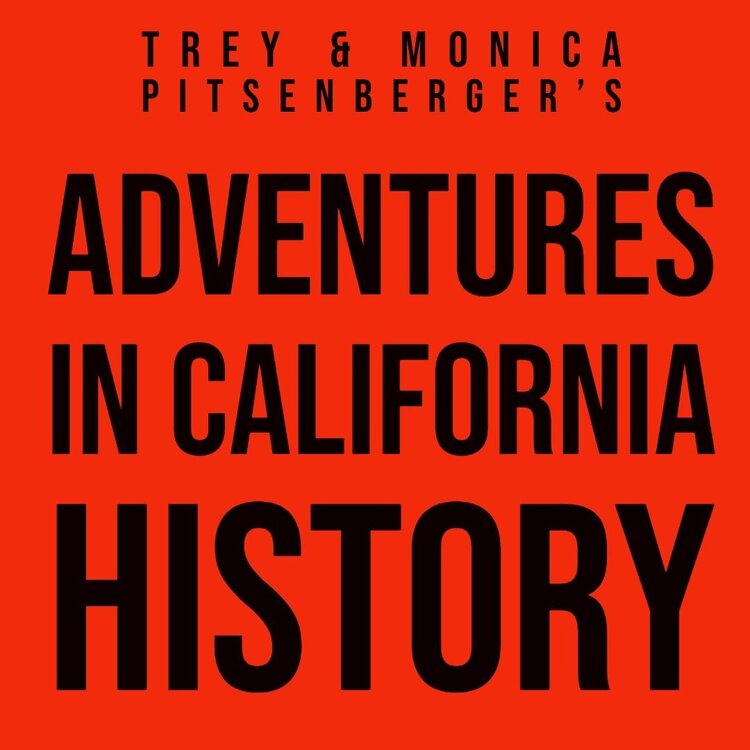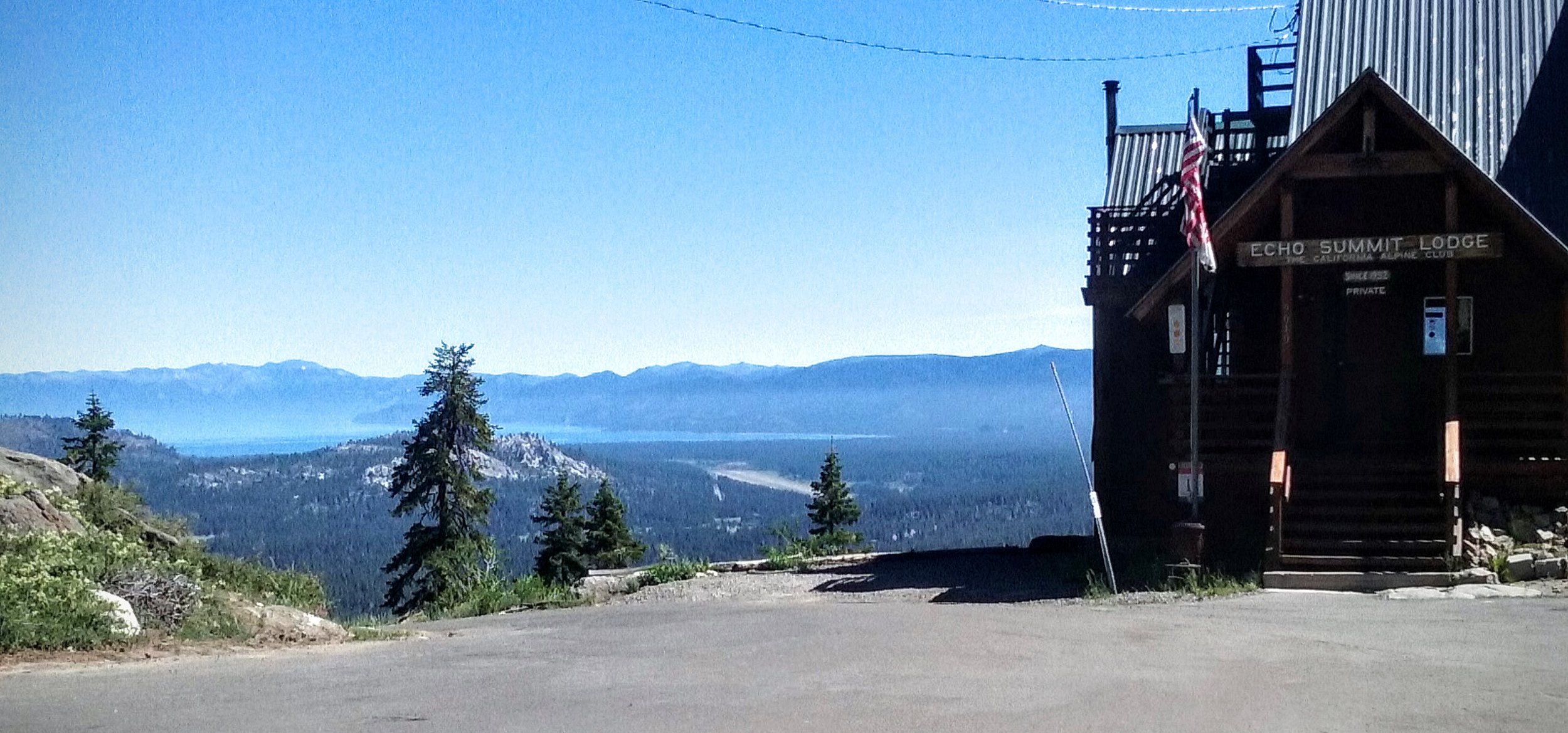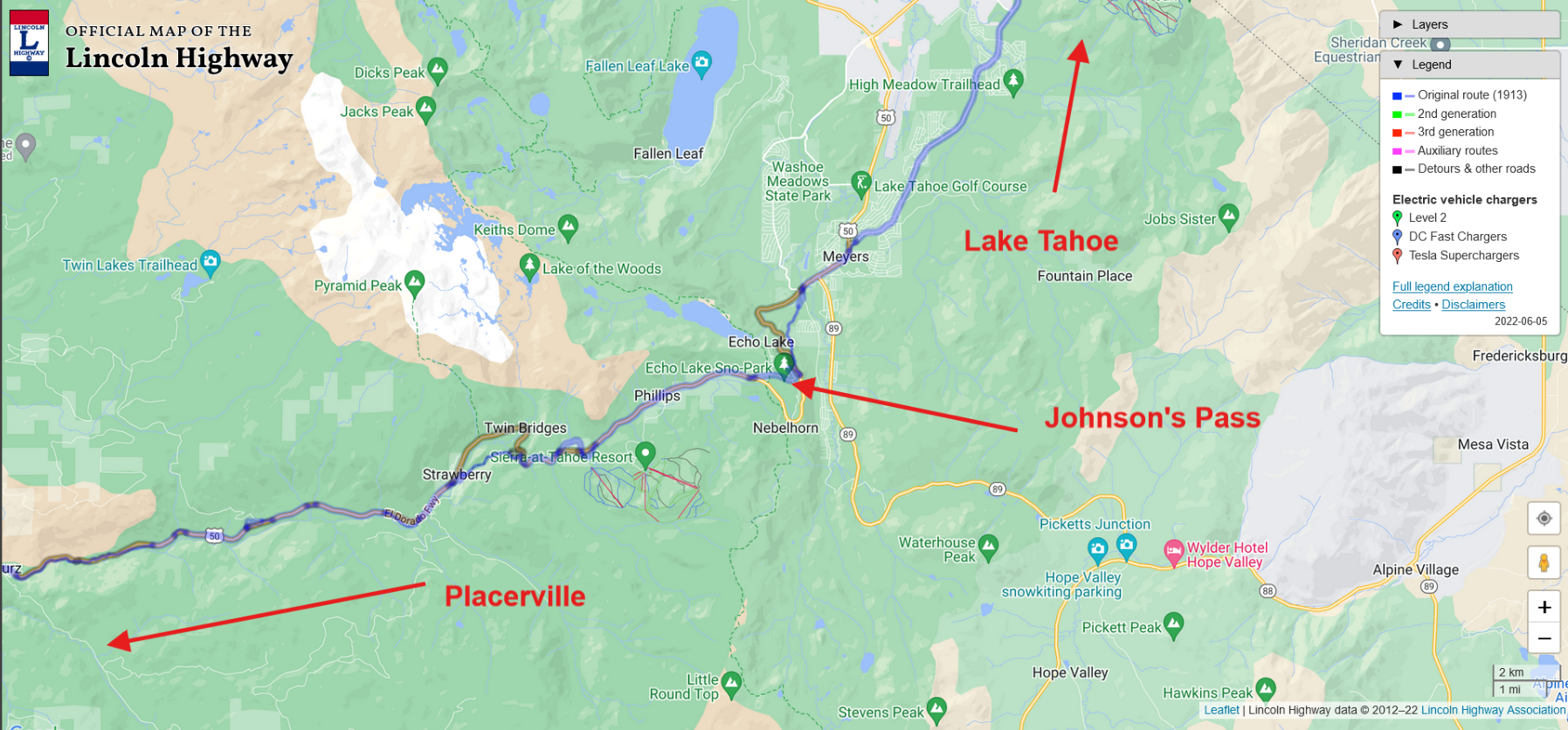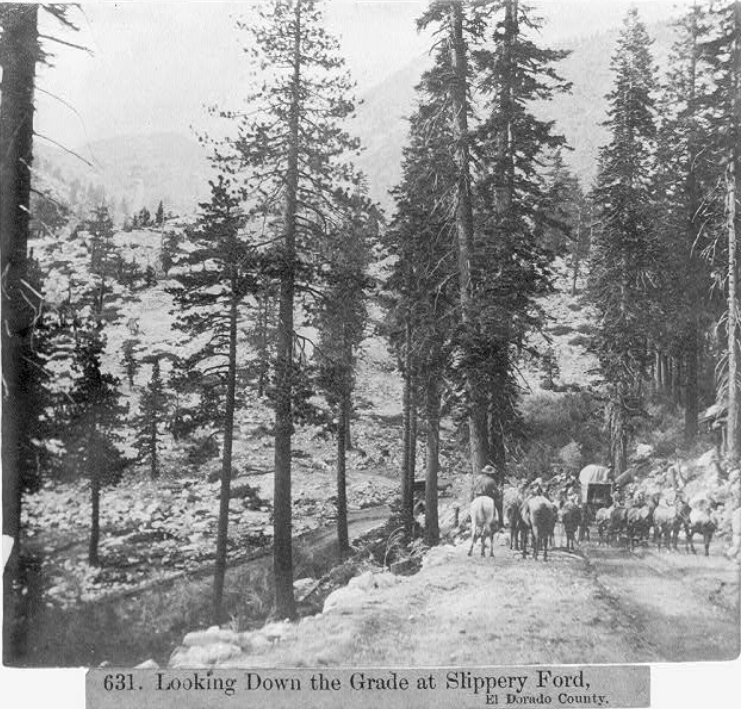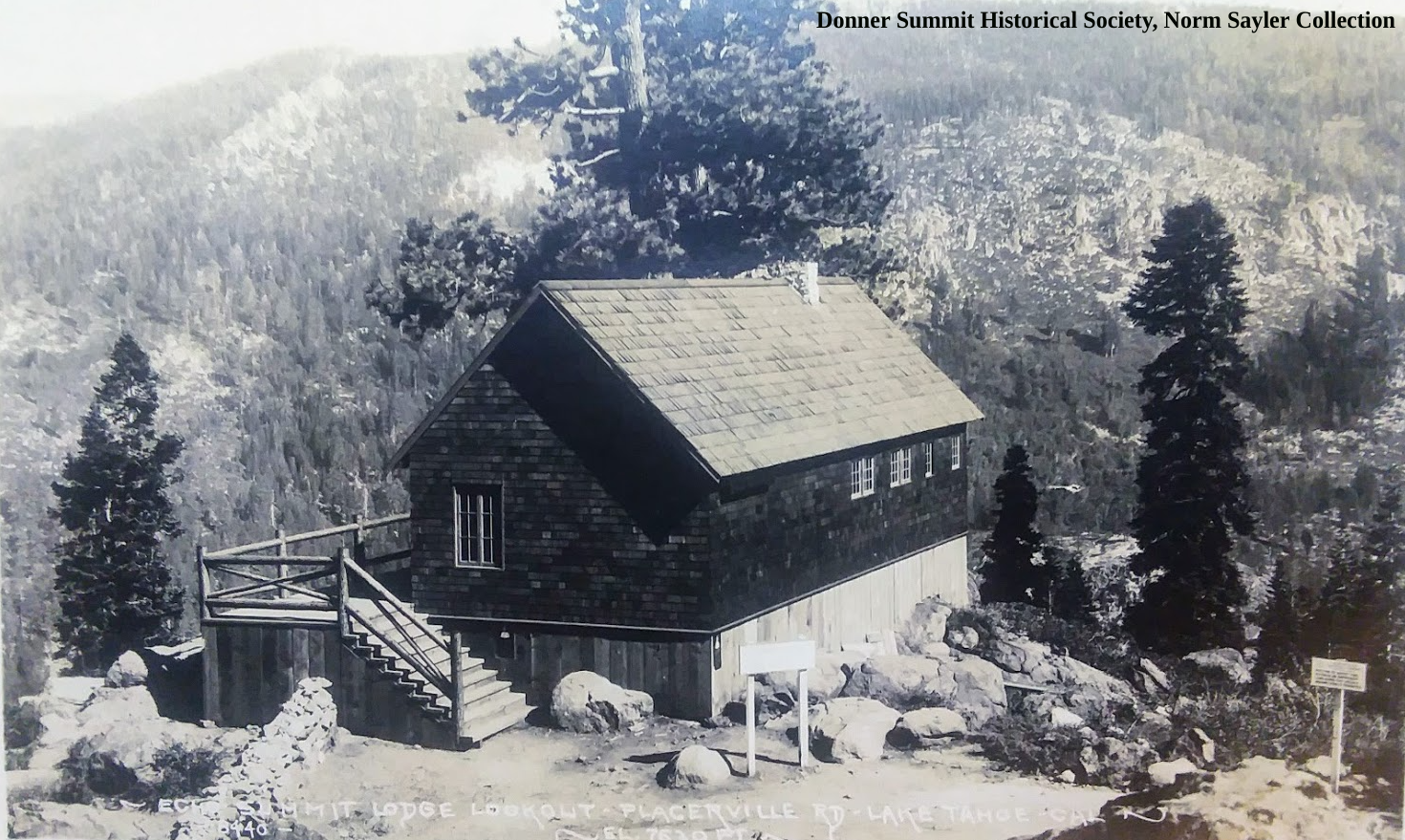Recently I was contacted by Greg Hull, who had worked for Cal Trans for thirty-three years as a construction engineer. His Father-in-Law was Darel Kehlet, whose family bought 640 acres on the west shore of Lake Tahoe and built Meeks Bay Resort from 1915-1969. Greg had inherited many family photos showing the resort's early development and surrounding highways and by-ways. He has kindly permitted these photos to be shared.
We see the Meek's Bay Resort Truck at the top of Johnson’s Pass at Echo Summit, looking east towards Lake Tahoe. The photo dates from 1922 or shortly after. It shows a man, woman, and dog, outside the truck, which has stopped at the pass. Johnson’s Pass was always a popular spot for travelers to snap photos. Just outside the frame, to the right, would be the Echo Summit Canteen Service Station owned by TC Wholbruck, whom we discussed.
In the early days of automotive travel, trucks and cars would have to back up steep hills as these vehicles had not yet been equipped with fuel pumps. On its journey "down the hill" towards Placerville, this truck would include a drive backing up the nearby Slippery-Ford Grade on the Lincoln Highway. What an experience that must have been.
The same spot today!
Thanks to Greg Hull for sharing this and some other photos I hope to post here shortly. I have placed a comparison photo showing what the location looks like today
Location on map.
